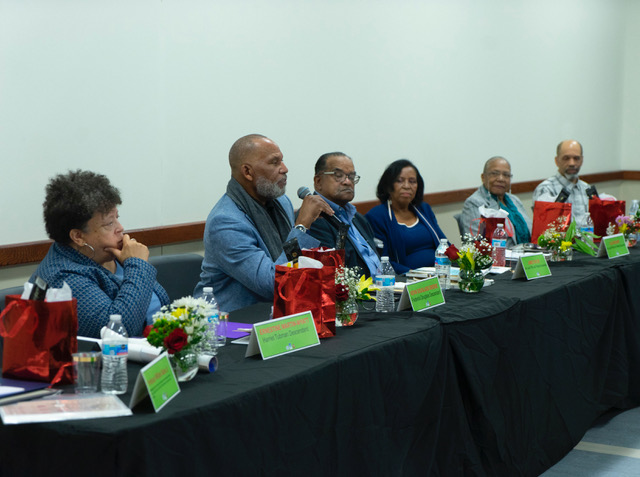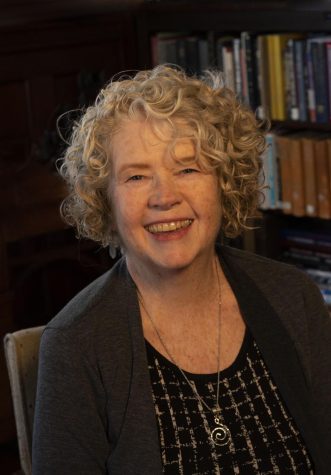Families pass on stories as a way to preserve their personal history and if they’re lucky, more than a few generations benefit from the information. For six African Americans, the stories their families tell have become etched into the narrative of Peekskill’s connection to the Underground Railroad and other historical events.
During a panel discussion at Peekskill’s Central Firehouse on May 11, descendants of Harriet Tubman, Frederick Douglass, Hawley & Harriet Green, and John Jacob “Rifle Jack” Peterson spoke about what they learned through the storytelling about their ancestors.
“Talk to your relatives,” said Ernestine Martin-Wyatt, a great, great, great grandniece of Harriet Tubman. “When an older relative tells me a story, something is triggered inside me to want to know more. I want the next generation to be proud of what they did.”
The event, sponsored by Sisters in Support and the City of Peekskill, and presented by the Peekskill Business Improvement District, saw some 50 members of the public listen to ‘family’ stories about illustrious names from the Revolutionary and Civil War eras.
“Harriet Tubman was a freedom fighter. Her dad taught her about reading the environment and her mother taught her about roots and plants. She had seizures from being hit in the head. She understood herself well but wasn’t able to read and write. She dictated a book and always gave glory to God. People always heard her singing, others thought her to not be intelligent.
“Harriet knew how to disguise herself so she was hiding in plain sight. She was a strategist and an analyzer. She wanted to be remembered as a woman of God, faith and love,” recalled Martin-Wyatt.
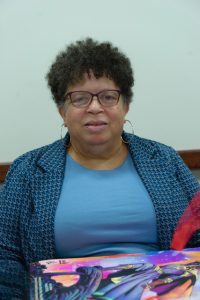
Martin-Wyatt said that unlike the mural on the building that houses Fern Tree, on North Division Street, Harriet wouldn’t have been carrying a lantern because that would have drawn attention to what she was doing, guiding people to freedom. “Her story is large and looking at the statue of her [at the intersection of Central Avenue and N. Division Street] reveals how her life symbolizes illumination and inspiration,” said Martin-Wyatt.
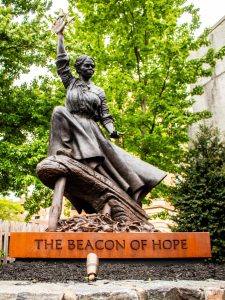
Kevin Douglass Greene grew up in California where people didn’t know his blood connection to the great Abolitionist. He’s the great, great grandson of Frederick and Anna Douglass. Greene, who was born in Paris into an Army family and raised in California, didn’t have to grow up as a Douglass as did his mother who lived in Washington DC.
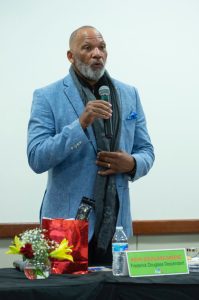
You gotta figure out where you have to fit into the puzzle.
— Kevin Douglass Green
“It was a privilege, an honor and a heavy load to grow up as a Douglass,” he explained. “I was raised away from the mystique of my ancestor. We were raised to be ourselves.” It wasn’t until they figured out, “How do we present ourselves or live in a way that it benefits others?” that it became known who his relative was. “People come to see me because I’m a descendant of Frederic Douglass. I had to learn more about my family and I had to bring something beneficial to the table.”
Greene noted that the challenges in living up to a historic legacy: “You gotta figure out where you have to fit into the puzzle.” He told the audience how he has five children that he’s homeschooled and they know their lineage and they can grow into it. “The suit can be heavy and overwhelming. You don’t wear that suit until it’s ready to fit.”
Greene also talked about the three branches of the Douglass Legacy carried out by his relatives. The first is Family Initiatives based in Rochester, NY, run by Douglass descendant Kenneth Morris. Family Initiatives advocates against modern day slavery (sexual trafficking) and combats racism. The second initiative is headquartered in Easton, MD run by Terrance Bailey. Operation Frederick Douglass on the Hill, is a nonprofit serving the community of Talbot County, Maryland. Greene, who has a full-time job with the department of Veterans Affairs and five children, travels and gives presentations like the one he did for Peekskill residents.
Wilamina Green Brown is a sixth generation descendant of Harriet Green, an Oneida woman, who had 36 property transactions in Peekskill between 1827 and 1865. Harriet was married to Hawley who owned a barbershop on N. Division Street, not too far from where the statue of Harriet Tubman is now. The front of the shop was a drugstore and Hawley’s barbershop was accessed through the rear by an alley. “It was alongside the [McGregory] creek, before it was covered over.”
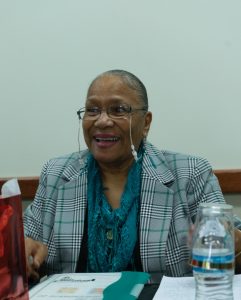
Green Brown and her son Gerald, have copies of deeds of property that Harriet owned. “No one believed us but we have something to show. There were people of color here, owning property and running safe houses.The abolitionist movement was strong here. The Green’s owned a house at 1112 Main Street that is still standing.
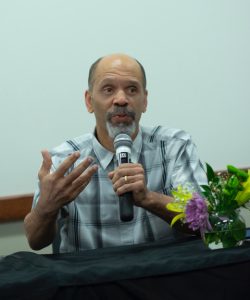
Two of the panelists live in the Peekskill area and shared the story of John Jacob “Rifle Jack” Peterson who played a role in the American defeat of British troops. Ellie Moshier and James Taylor married into the Moshier family and its matriarch, Kay Moshier was very interested in ancestors and traveled all around the area researching genealogy.
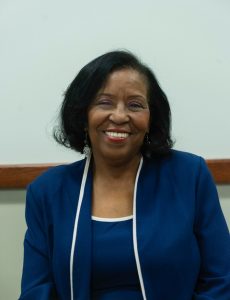
Through Kay Moshier’s investigation, she learned the story of Peterson who fought for the Americans at Saratoga, where he was shot.
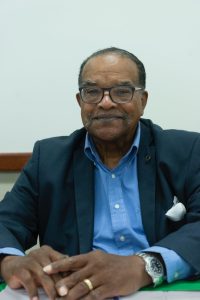
Peterson was recognized by Pierre Van Cortlandt for his time in the American army. After spending three years in the military, he got a job working on a farm at Tellers Point (Croton) in September 1780. He saw a British ship, The Vulture, approaching. He hid in the bushes and being a marksman shot at the boarding party that was coming from the British ship.
Continue to search for your ancestors, because they are a source of your pride,” said Ernestine Martin Wyatt.
The panel was moderated by Professor William Sales Jr., a Peekskill resident who is the former chairperson of the Department of African American Studies at Seton Hall University.
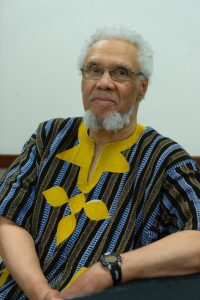
“We build a community, a beloved community, with a program like this today. This is the never ending task in the African tradition, the ancestors never die. This is not just a commemoration, it’s a marching order, to tell the stories”, said Sales.



